alt
The Wilcox Train Robbery by the Wild Bunch: 123 Years Ago this Month.
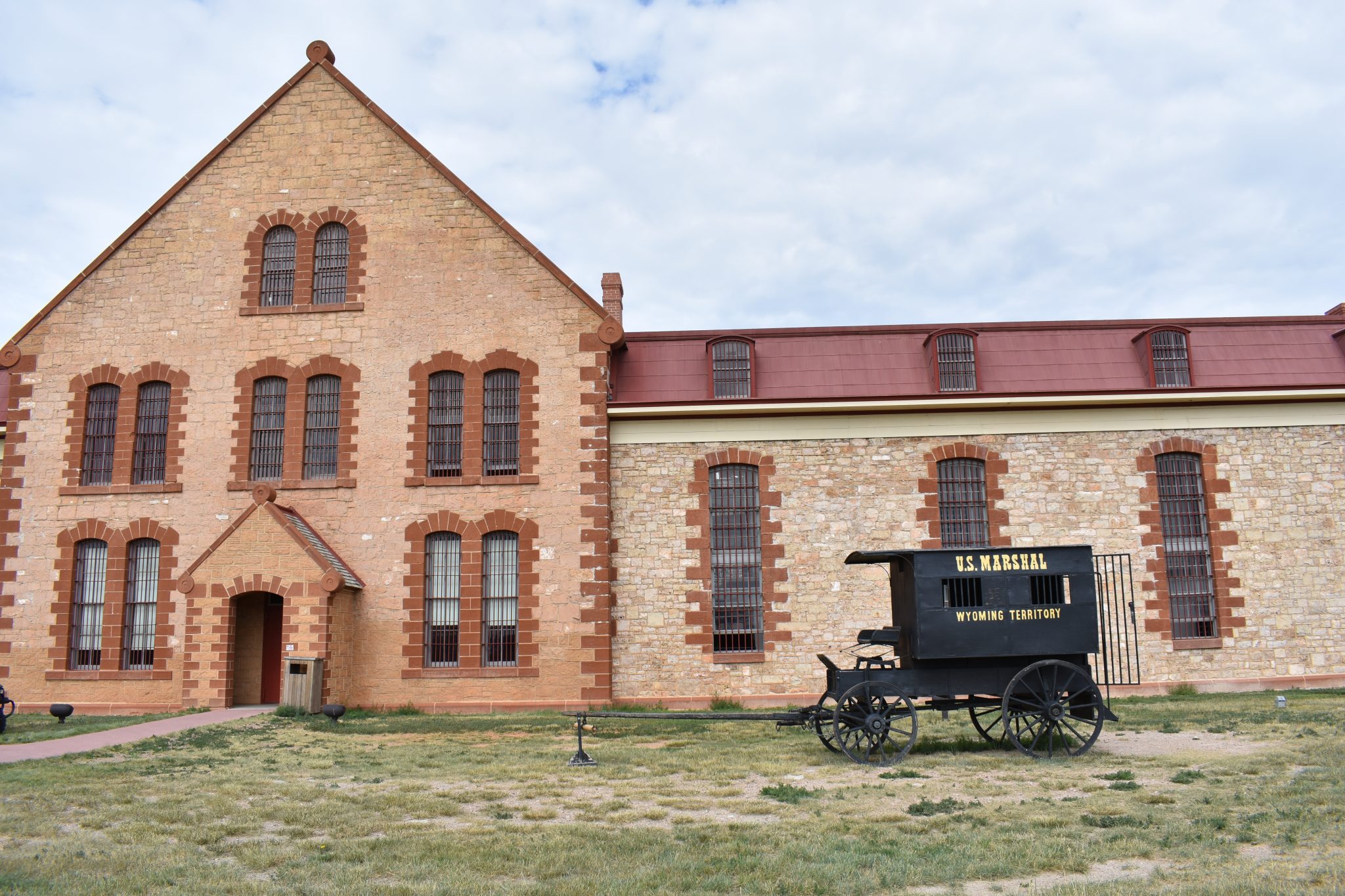
Wyoming Territorial Prison, Laramie, Wyoming
At 2:00 a.m. on June 2, 1899, five masked men robbed a Union Pacific Train near Wilcox Wyoming, near Medicine Bow. The bandits flagged down the train and forced the train crew to separate the locomotive from the rest of the train, and drive it across the bridge, which was then blown up with dynamite.
The robbers then blew up the safe with dynamite, actually using too much of the explosive, and blew up the entire railroad carriage. They five bandits stole around $36,000. This incident was depicted in the 1969 movie, Butch Cassidy and the Sundance Kid, starring Robert Redford and Paul Newman. Although in the movie, it showed Butch and Sundance robbing the train, it is a matter of speculation if Butch was even there.
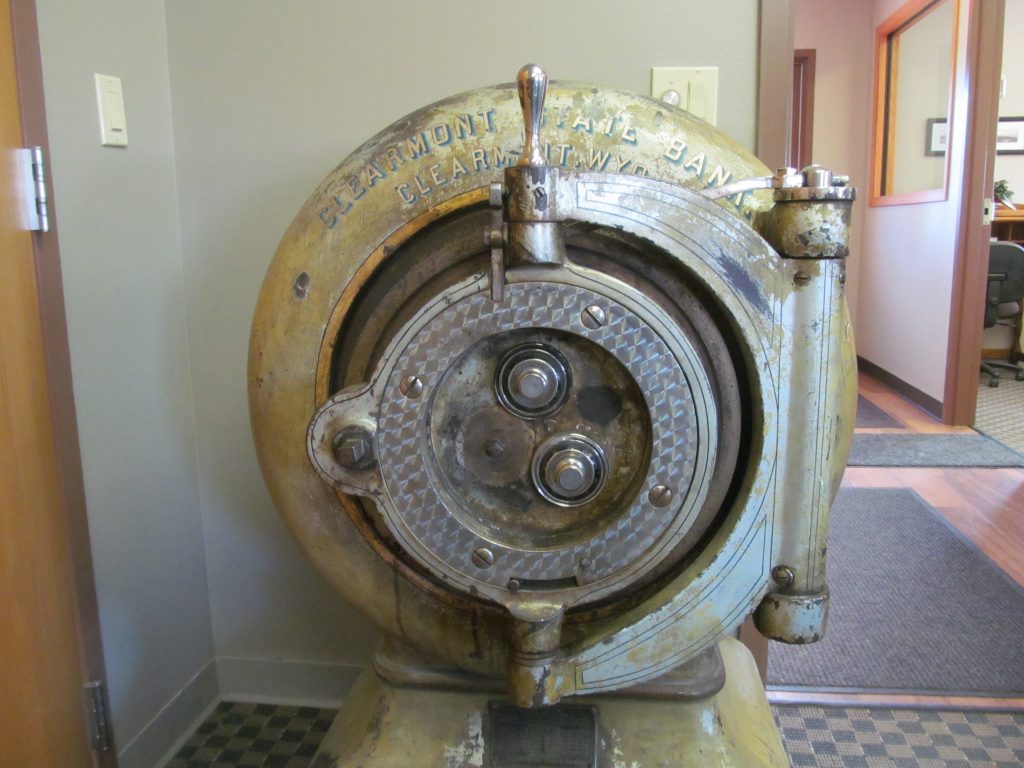
The Weekly Boomerang, Laramie January 16, 1902: The Wilcox Robbery. The Wilcox robbery occurred on the night of June 2, 1899, at Wilcox a small station west of Laramie, the express car being blown open and a large sum of money secured. Posses from several parts of the state started out in pursuit of the bandits, who took a course north through Casper.
The Last of the Gang.The gang was composed of five men, all of whom have been killed or captured with the exception of Harry Curry, whom it is claimed was the man who shot Sheriff Josiah Hazen.
George Curry was killed in Utah last year during a battle with officers, Lonie Logan was located in, Kansas City and was also killed while resisting capture.
Harry Longabaugh was captured recently in St. Louis and is thought to be implicated In the Great Northern train robbery in Montana.
Bob Lee, alias Curry, was captured in a gambling house in Cripple Creek, and sentenced to a term in the Wyoming state penitentiary. His trial occurred In Cheyenne’ and created great interest at the time.
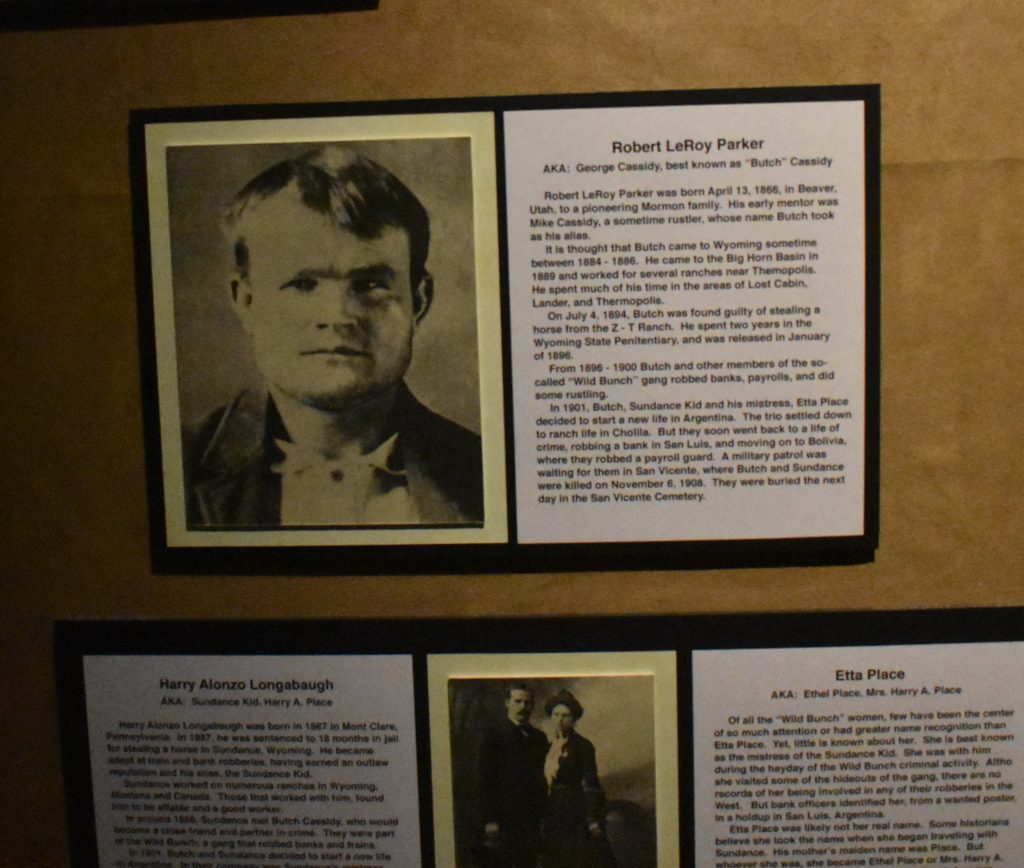
Many of the robbers named were members of Butch Cassidy’s Hole-in-the-Wall gang, but no one named Cassidy as one of the robbers. Cassidy had, a few years before, been pardoned by the Wyoming Territorial Governor Richards, and he had promised to not commit any crime in Wyoming.
Cheyenne, Wyoming Tribune, January of 1896: Governor Richards Issued a Pardon to George Cassidy Yesterday. (Butch used the name George as an alias) George Cassidy a convict who was sentenced from Fremont County to serve two years in the state penitentiary for horse stealing, was yesterday granted a pardon by Governor Richards. Cassidy had but six months of his term to serve and the pardon was issued largely for the purpose of restoring full citizenship.
The petition was a very strong one and was signed by all the prominent and leading citizens of Fremont County, who are satisfied that Cassidy will make a good citizen. Governor Richards only granted the pardon after a careful study of the case and consultation with the judge who sentenced him and who was also a signer of the petition for a pardon. Cassidy will return to his old home in Fremont County and will engage in business.
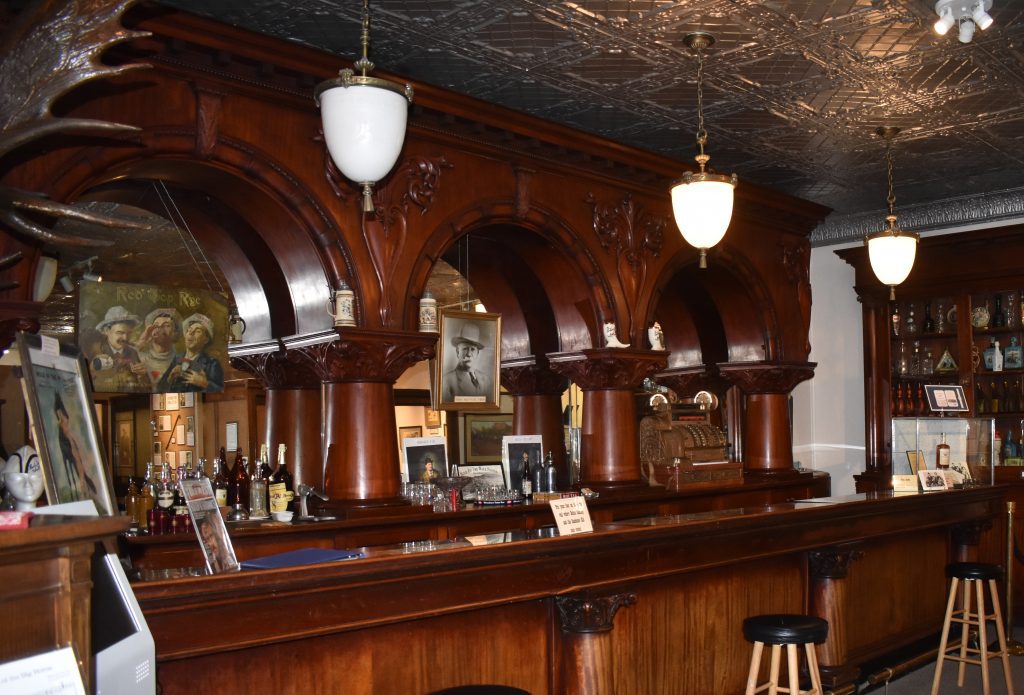
And this piece in the Laramie Semi-Weekly Boomerang, January 1896. Governor Richards has pardoned George Cassidy, who had six months yet to serve in the state penitentiary for horse stealing. The petition asking the pardon was numerously signed by leading citizens of Fremont County, including the Judge who sentenced the prisoner.
However, even though Cassidy was not actively involved in the robbery, in the book, Butch Cassidy, The Wyoming Years, written by Bill Betenson, Cassidy’s great-nephew, he stated that Will Simpson saw Cassidy spending a considerable amount of gold coins in Tom Skinner’s saloon in Thermopolis.
Cassidy assured Simpson he had no hand in the robbery. W.I. Park, of the Union Pacific, later said that some of the stolen money in the Wilcox robbery did include some gold.
Some historians feel that perhaps Cassidy planned the robbery, but did not participate in it.
Some robbers came a long way to be a part of the robbery. In this article in The Laramie Republican, January 16, 1900. The Curry Boys suspected of the UP Robbery. Pinkertons Get onto Them and They Suddenly Disappear from Their Home in Harlem Mont. The following dispatch regarding the Curry boys recently appeared in the Great Falls Tribune: Fort Benton, Jan 12. The sudden nonappearance of Louis, better known as “Loney,” and Robert E Curry from their home at Harlem makes public much of the mystery that has surrounded the robbery of a Union Pacific mail train between Wilcox and Rock Creek, Wyo., on June 2. 1899. The circumstances of the robbery will be remembered by all.
The train was held up at night, the express safe blown open and an amount estimated from $30,000 to $80,000 taken. The hurried flight of the six robbers through Wyoming to the “Hole-in-the-Wall” in the Big Horn basin, their desperate encounters with sheriffs’ posses and railroad detectives, the death of one sheriff at their hands, and their final escape are familiar to all. So far as known, the first clue to the robbers was secured about December is when the Stockmen’s National bank of Fort Benton received from Loney Curry five $1OO bills of the First National bank of Portland, to be forwarded for redemption.
The bills, which wire numbered seriatim, lacked the signatures of the president and cashier and the lower right-hand comer of each had been torn off. They were forwarded in the usual course of business to the bank of issue. There it was found that they were part of a large shipment from the United States treasury which had been stolen from the Pacific Express company’s car during the robbery mentioned. The express company was notified and put the Pinkertons on the track of the Curries. The suspects somehow got wind of the proceedings and last Saturday took a supply of provisions and a wagon and “hit the breeze.” They have a very fair chance of escape, as Harlem is the center of one the few large acres of wild unsettled country left in the United States.
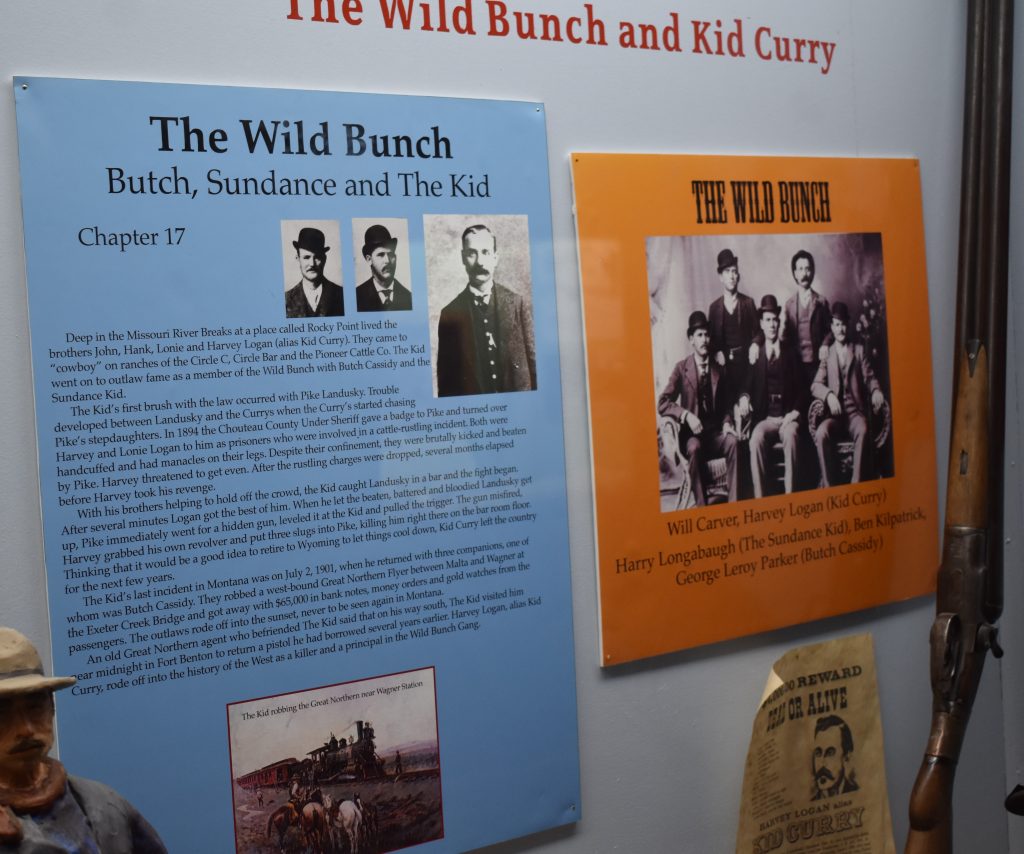
According to information at the Fort Benton Museum, Butch Cassidy did spend some time hiding from the law it that area occasionally.
In The Lander Clipper, in August 13, 1897 it gives a good idea of what type of bandits were operating in Wyoming at the time, and gives a description of the so-called Outlaw Trail.
Operating in Wyoming a Disciplined Organization of Range Robbers Terrorize Parts of Four States. Very Well Organized and Work on a Systematic Plan- Consists of Local Captaincies -Composed of Range Robbers, Bank Burglars and Highwaymen—Some of the Crimes Credited to These Bandits.
The historic depredations of the old time and famous Murrell gang of Mississippi River and southern swamp thieves and desperadoes bid fair to be far eclipsed by the record of the at present operating gang of bandits now plundering portions of Wyoming, Colorado, Idaho and Utah. Such is the information in a special to the Denver News. This great frontier bandit aggregation has an officered and disciplined organization, comprising range robbers, bank burglars, highwaymen and secret ”fences” or receivers and disposers of stolen property,
Sheriff Ward, of Uinta county, Wyoming, estimating to your correspondent the total strength of the band at 600 members. Including in their nefarious work border portions of the before-named states, these banded thieves have a systematic chain of posts or stations, for the temporary storage or handling of their plunder and as gang headquarters and operation bases, the chief of such stations being, far as known, the Robbers’ Roost, on Blue Mountain, between Utah and Colorado; Brown’s Park (or hole), on the borders of Colorado, Utah and Wyoming; Green Mountain, in Utah, south of the Rio Grande railroad crossing of Green River; Powder Springs, in southeast Sweetwater county, Wyoming, and the-Hole in-the Wall in Johnson county, Wyoming.
This great criminal border organization appears to consist of respective local captaincies, each local captain reporting to the supreme captain, all important matters being of final reference to an executive high commission composed of the various local captains, with the supreme captain in the chair. The local captain of the Powder Springs or the Snake River division is”Broncho” Johnson; the Brown’s Hole gang is directed by “Butch” Cassidy, already notorious an escaping death at the hands of the avenging citizens in last years slaughter of the Meerker, Colorado, bank robbers.
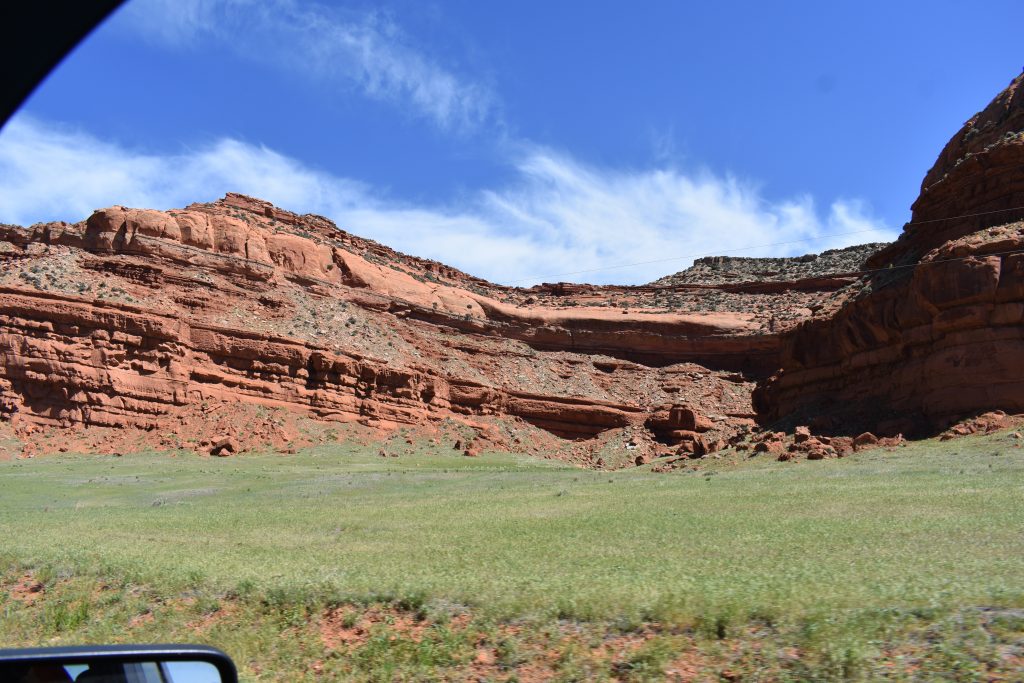
In the Cheyenne Daily Leader, August 1900 it gives an idea why the gang was so successful in their eluding the posses after the robberies. For one thing, they would leave fresh horses at various sites to be able to relay. Many ranchers knew and liked Butch and his gang, and were willing to help them escape the posses.
The trail leads south in the direction of the Bitter Creek Mountains and if the present course is followed, will go through what is known as the Haystacks, a rough, broken country filled with natural hiding places. It is presumed that the robbers are well acquainted with the country, as it is believed that they are a part of “Butch” Cassidy’s gang, and members of the gang know every foot of the mountains. Some of the members of posse have been through the Haystacks on former occasions, and the knowledge thus gained will be invaluable now.
The Wilcox robbery and later, the Tipton Robbery, were two of the last train robberies in Wyoming. Better communication between the peace officers, marked bills, and more Wyoming residents wanting law and order, made it harder for the outlaws to rob a train and get away with the loot.
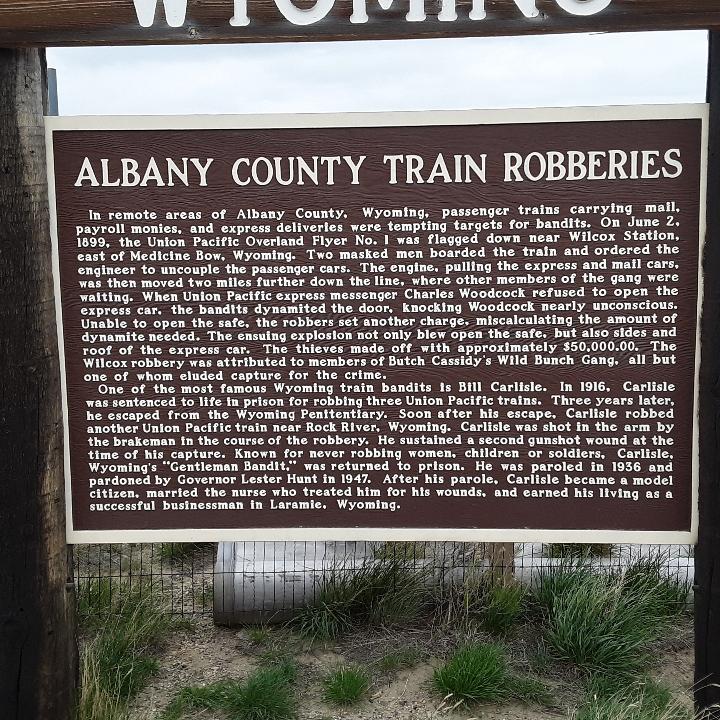
Feeling the heat in Wyoming, Butch Cassidy and some of his gang emigrated to South America.
In the Cheyenne, Wyoming Semi-Weekly Tribune, on April 1, 1904: Back to the Farm: Butch Cassidy and Harvey Logan are said to have become tillers of South American Soil. Joseph H. Forquer, at one time a United States marshal, but now a deputy sheriff, and who has done considerable to exterminate the lawless element of central Arizona, passed through Denver on his way to Cheyenne last night, to obtain new evidence against three rustlers who are under arrest in Arizona, says the Denver News.
Mr. Forquer was the leader of the posse in southern Texas when Bill Carver, a desperate character and a member of the Hole-in-the-Wall Gang, was killed in that state. At present he is a deputy sheriff at Solomonville, Ariz., and is still a terror to all wrong doers.
He told of the whereabouts of some of the notorious desperadoes of the country. Butch Cassidy, together with Harvey Logan, leader of the old Curry gang, are now engaged in farming in South America.
Harry Longbaugh, a member of the gang, who was mixed up in the hold up of the First National bank at Winnemueca, Nev., is with the other two desperadoes in South America. Cassidy has been in this country several times, according to Mr. Forquer, but few attempts have been made to capture him.
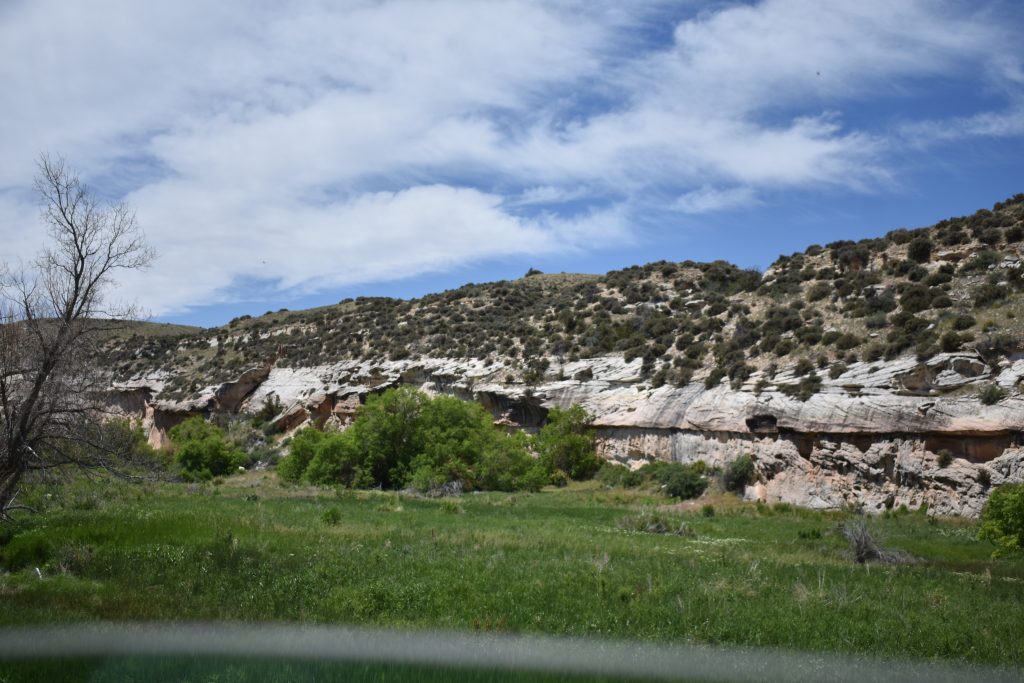
In Butch Cassidy and the Sundance Kid, the movie depicts the accepted belief that Butch and Sundance were killed in South America. However, there are eyewitness accounts from his family and friends that Cassidy, at least, was not killed there, but returned to the United States. According to his family, he lived out his life quietly in the northwest, dying in 1937.
Whether he died in South America, or came back to the United States, his legacy lives on as one of Wyoming’s, and especially Johnson County’s, best known and most colorful outlaws.
There will be more stories about Butch Cassidy here on Sheridan Media.


Mike McLaughlin
June 4, 2022 at 12:11 pm
interesting! Thanks!
Linda Lovato
June 5, 2022 at 10:35 am
Enjoyable article.
cvannoy
June 6, 2022 at 7:51 am
thanks